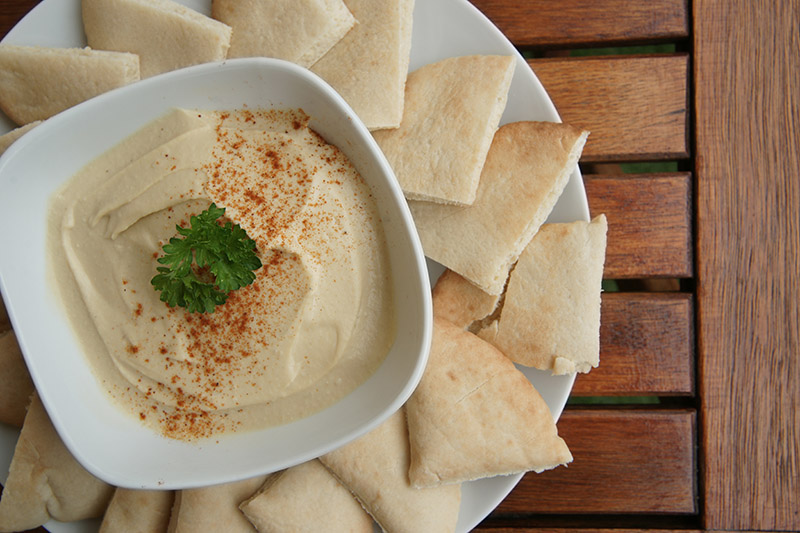Chickpeas, lemon juice, tahini or sesame paste, and olive oil. These are the main ingredients of one of the most famous creams around the world: hummus. This millennial chickpea pure, whose origins are still a matter of debate, has become –as we would say in the 21st century– a viral meal. Although we don’t know the exact country were it originated, we know it comes from the Middle East, from where it moved to Greece, and then to all the countries of the Mediterranean region, until it reached the northern limits of the European continent.

Its full name is hummus bi tahina, as hummus means only “chickpea”, which, mashed and cooked, becomes the main food of this dish. To this puree, we then add lemon juice, olive oil, and tahini, a paste of sesame seeds husked with salt. However, the alternatives to this recipe are as wide as the places it is consumed. We don’t even need to leave the Middle East to find many different versions, in Lebanon, Palestine, Turkey, Syria, or Armenia. And, of course, if we try in Greece, we will discover that it is very different to that consumed in the Arab world.
To this puree, we then add lemon juice, olive oil, and tahini, a paste of sesame seeds husked with salt.
The way of serving it also changes from one place to another, although it’s common to find it as a breakfast. In the last decades, it has spread across the West, due, among other things, to the rise of veganism and vegetarianism, and to the nutritional properties it contains (it is high in proteins and fiber, and low in fats and sugars). Something common to almost every place is that it is served with a flatbread, for example the pita bread.
The issue of its origin
The birthplace of hummus is one of today’s hottest gastronomical topics. As its popularity rose across the West, many are the countries that have tried to claim its creation, to the point that they have accused each other of cultural appropriation.
In 2008 began the so called “war of hummus”, when the Association of Lebanese Industrialists filed a lawsuit against Israel claiming that they had stolen their recipe and they were selling it as their own.

In 2008 began the so called “war of hummus”, when the Association of Lebanese Industrialists filed a lawsuit against Israel claiming that they had stolen their recipe and they were selling it as their own. Its background wasn’t only political, but also economic, as its sales predictions for 2027 reach the 1,104 million dollars. This competition drove both countries to try to prepare the largest hummus dish in history. The winner was (and continues to be) Lebanon, when, in May 2010, chef Ramzi Choueiri cooked a meal of 10,452 kilos. The dish was prepared by over 300 cooking students under the direction of chef Ramzi, and used a ceramic bowl with a diameter of 7,17 meters, created by the local architect Joe Kabalan.
The way of serving it also changes from one place to another, although it’s common to find it as a breakfast.
Food wars aside, the indisputable fact is that hummus has won the stomachs of the people all around the world, especially of those subscribing to a Mediterranean diet and its healthy ingredients. Today it’s easy to find this cream in almost any supermarket, not only in its original version, but in its multiple and exotic alternatives, from hummus made out of artichokes, chard or lupine, to those dressed with paprika, nutmeg or avocado.
Patricia Montoro
This post is available in: English Español

